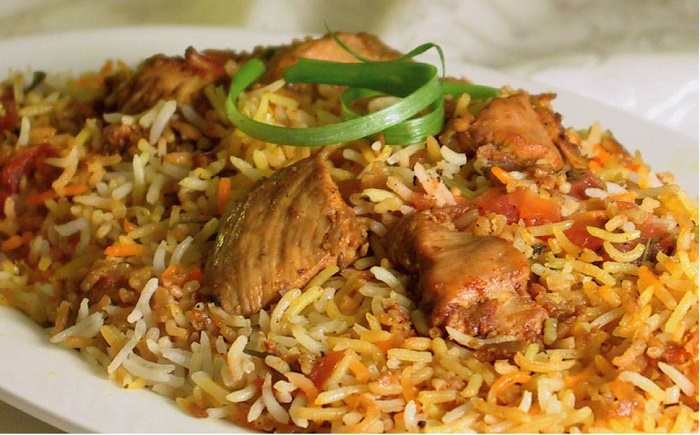
Image Credit: missionsharingknowledge.files.wordpress.com
The famous Mughlai cuisine evolved in Medieval India during the Mughal Empire. The cuisine that portrays a mix of culinary styles and recipes of North India and Central Asia is highly influenced by the cuisines of Central Asia that has a rich history of rule of the Turco-Mongol Mughal empires. The Mughlai cuisine is generally quite spicy, rich and heavy marked with a very unique aroma. It has over time remained one of the most popular and favourite cuisines among foodies across India. Some of its signature dishes include Biriyani, Mughlai Paratha, Murg Musallam, Kebabs, Malai Kofta and Rezala that are bound to entice the gastronomic enthusiasts to crave for more.
Evolution & Distinct Features
The Mughlai cuisine developed in the royal kitchens of the Mughal Empire starting from the rule of Babar who initiated the Mughal Empire in India in the 16th century. His autobiography called ‘Babarnama’ mention about various food items including Kebab prepared out of sheep. The Mughlai cuisine represents a mix of Indian cuisines with that of the Persian cuisines. The latter already existed in India for more than three centuries prior to the introduction of Mughlai cuisine. The different Sultans of the Delhi Sultanate who ruled various regions of India from Delhi that include the different Turkic and Pashtun (Afghan) Muslim dynasties introduced the use of Tandoor, Kebab, Keema and Naan prior to the Mughal dynasty. However with time these items developed as an integral part of the Mughlai Cuisine. While the Chagatay Turkic languages remained the native languages of the Mughals, the Persian language was adopted by the Mughal Empire as the official language, thus many of the Mughlai Indian dishes bear names in these languages.
Mughlai cuisine has a profound influence on the culinary styles and regional cuisines of present day India, Bangladesh and Pakistan and its cooking style is applied in traditional North Indian cuisines, particularly in Delhi and Uttar Pradesh as also in the South Indian city of Hyderabad in Telengana. The cuisine also marks its influence in the city of Karachi in Pakistan, especially among the Muslim immigrants called Muhajir who migrated from different regions of India following the Partition of India. The Mughal cooking techniques also had profound influence in the Awadh region which eventually led to the development of the Awadhi cuisine of Lucknow.
The Mughals were Muslims by religion and thus did not eat pork and as Hindus did not consume beef thus meat of these two were not part of Mughal cuisines. The primary non-vegetarian dishes would comprise of meat of goat, fowls, sheep and venison. Among the most distinctive features of Mughlai cuisine are the unique use of combination of ground and whole spices and the distinguishing aroma that gives each dish a unique and exotic taste. Extensive use of milk, cream and butter in various gravies and curries makes the dishes even more appetizing with foodies ending up licking their fingers. The different spices, saffron, dry fruits, ghee and other diary produces makes the traditional Mughlai cuisines quite rich and heavy, however more lighter versions that are low in fat contents are tried and tested nowadays by the more health conscious but enthusiastic foodies. The Mughlai dishes are varied, both vegetarian and non-vegetarian, starting from Biriyani, Pulao, Naan, Kofta, Kebab, Pasanda, different tandoori items, to a wide range of sweet dishes like Sheer Korma, Shahi Tukra, Kheer, Kulfi and Firni.
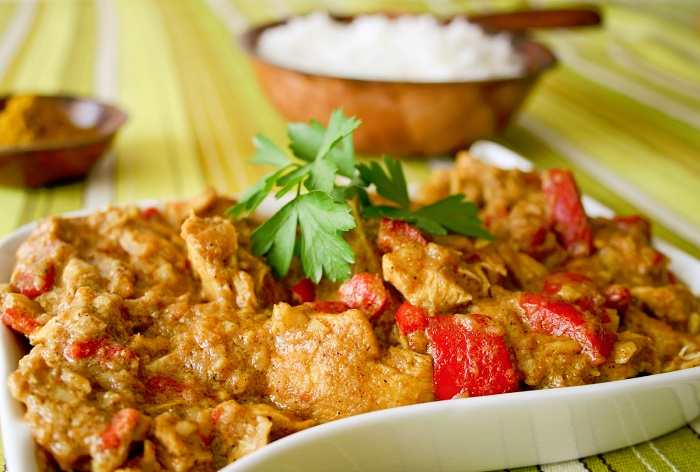
Popular Mughlai Dishes
Notable Mughlai dishes include Biriyani, Mughlai Paratha, Murg Kebabs Mughlai, Qeema Matar, Haleem, Nargisi Kofta, Murg Mosallam, Malai Kofta, Reshmi Kebab, Navratan Korma, Shahi Rogan Josh, Rezala, Pasanda, Shahi Kaju Aloo, Boti Kebab, Murg Chaap, Murg Tandoor, Kachri Qeema and Meat Durbari among many others. Let us have a glimpse at some of the most popular ones.
Biriyani
It is one of the most lips smacking mixed rice delicacies that comprise of rice, meat and different rich and aromatic spices and seasonings among other ingredients and prepared with great precision giving it a yummy and exotic taste. There are different varieties of Biriyanis found that vary in ingredients used according to different regions they belong to or according to the meat used. The most famous variety is perhaps the Hyderabadi Biriyani that is a signature dish of the Hyderabadi Muslims. Other varieties include the Delhi Biriyani, the Calcutta/Kolkata Biriyani, the Sindhi Biriyani and the Malabar Biriyani among others. The vegetarian version of biriyani called Tehari, Tahari or Tehri was developed so that the Hindu bookkeepers of the Muslim Nawabs can savour this rice delicacy.
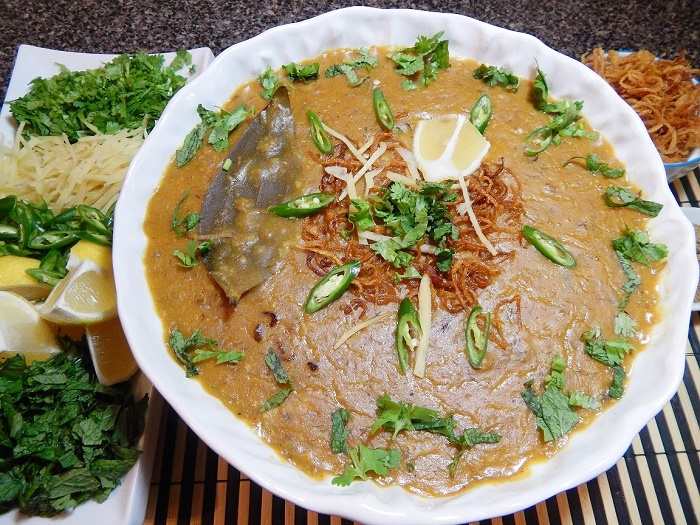
Haleem
Also known as Khichra in India and Pakistan Haleem is a very popular stew like preparation made of wheat, barley, lentils, different spices and meat (generally minced). Rice is also used sometimes. The slow cooking style of the dish that takes around seven to eight hours ensures fine blend of all the ingredients giving it a perfect paste like consistency. Although this snacks item is available in bazaars throughout the year, it occupies a special place across the globe during the months of Ramadan and Muharram of the Muslim Hijri calendar.
Mughlai Paratha
It is a delectable soft fried bread that is prepared out of whole-wheat flour stuffed with a mix of ingredients including keema or minced meat, eggs, chopped onions, green chilli and pepper among others. This bread delicacy remained among many Mughlai cuisines that made their way to the undivided Bengal and today counts among the most popular heavy snacks items of Kolkata, India as also in Bangladesh.
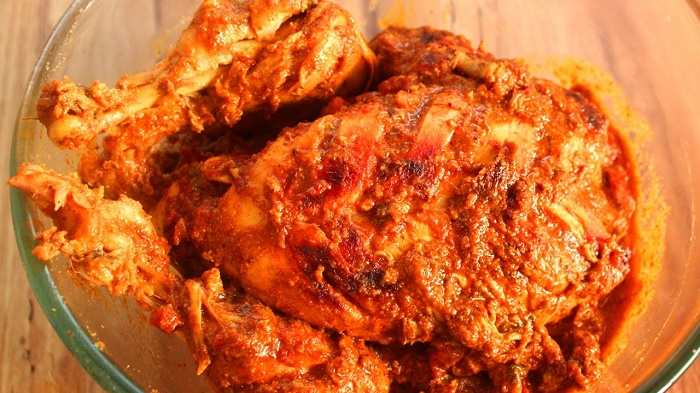
Murg Musallam
It is one of the most exquisite Mughlai dishes that according to sources was a favourite dish of the Sultan of Delhi of Turkic descent, Muhammad bin Tughluq and also remained popular among the royal Awadhi Mughal families. The dish comprise of a whole chicken prepared with different spices and seasonings with the main ingredients being egg, tomato, ginger and onion.
Navratan Korma
It is a vegetarian delicacy from the Mughal kitchen, a vegetarian korma that is prepared out of vegetables, nuts and paneer. Navratan means nine gems and this dish is usually prepared out of nine different vegetables.
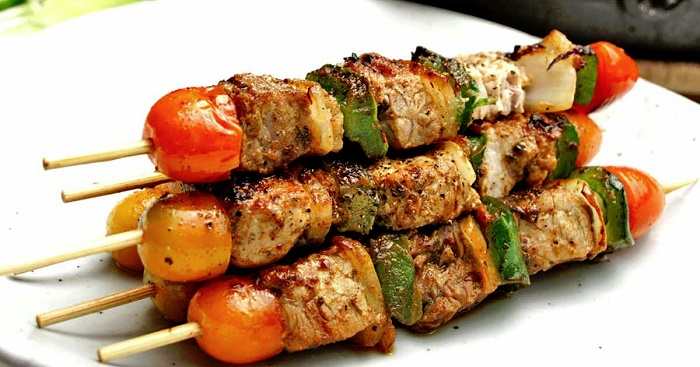
Kebabs
The origin of variety of Indian Kebabs that are usually eaten as snacks or starters trace back to the Mughal cuisine that includes appetizing dishes like Boti Kabab and Reshmi Kebab. Traditionally each of these dishes based on grilled meat has distinct set of ingredients including exclusive combination of spices and unique cooking procedures. With time cooking procedures including grilling and roasting developed in preparing varied forms of kebabs, some of the popular ones being shish kebab, shammi kebab, doner kebab, Tunde ke kebab and tikka kebab.
Rogan Josh
Rogan Josh is originally a Persian lamb dish that was brought to Kashmir, India by the Mughals and has now become one of the staples of Kashmiri cuisine. Traditionally it is a gravy dish comprising of braised lamb chunks prepared with browned onions, ginger, garlic and yogurt and seasoned with spices like clove, cinnamon, cardamom and bay leaves.
Pasanda
Another delicacy from the royal Mughal kitchen is Pasanda, the name of which is probably derived from the Urdu word ‘pasande’ which means favourite. It is traditionally a rich lamb curry made of lamb legs that are flattened into strips and marinated with ingredients like chilli powder, yogurt and a combination of spices for hours. The marinated lamb legs are then fried with other ingredients like onions, coriander and chillies among others.
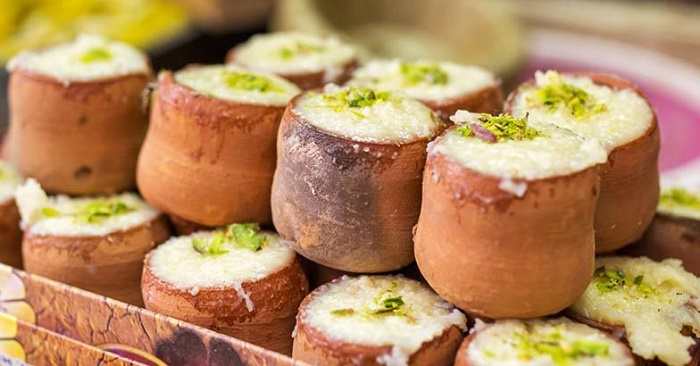
Sweet Dishes/Desserts
Some of the popular Mughlai dessert items are
Kulfi
Kulfi is a popular frozen dairy based dessert that probably originated in the 16th century during the Mughal Empire. The term Kulfi is derived from a Persian word which means a covered cup. It is a mixture of thickened milk seasoned with saffron and pistachios that is frozen in a metal cone and later served with faloodeh, a kind of noodles prepared from starch, and garnished with pistachio nuts, saffron and ground cardamom.
Sheer Korma/Khurma
It is a very popular Muslim vermicelli pudding that is prepared during festivals like Eid ul-Fitr and Eid al-Adha. The main ingredients of this dish, the name of which literally means milk with dates, are whole milk, vermicelli, dates and sugar, while rose water, almonds, raisins, pistachios, saffron, cloves and cardamom are added depending on the choice of the region.
Firni
It is a kind of rice pudding that is set and served in shallow earthen dish. This rice based sweet is garnished with saffron, pistachios and chopped almonds.
Shahi Tukra
Shahi Tukra is a rice bread pudding that is especially prepared during Muslim festivals like Eid and on the month of Ramadan. The ingredient of this delicious dessert includes bread, dry fruits and condensed milk and is seasoned with cardamom.



